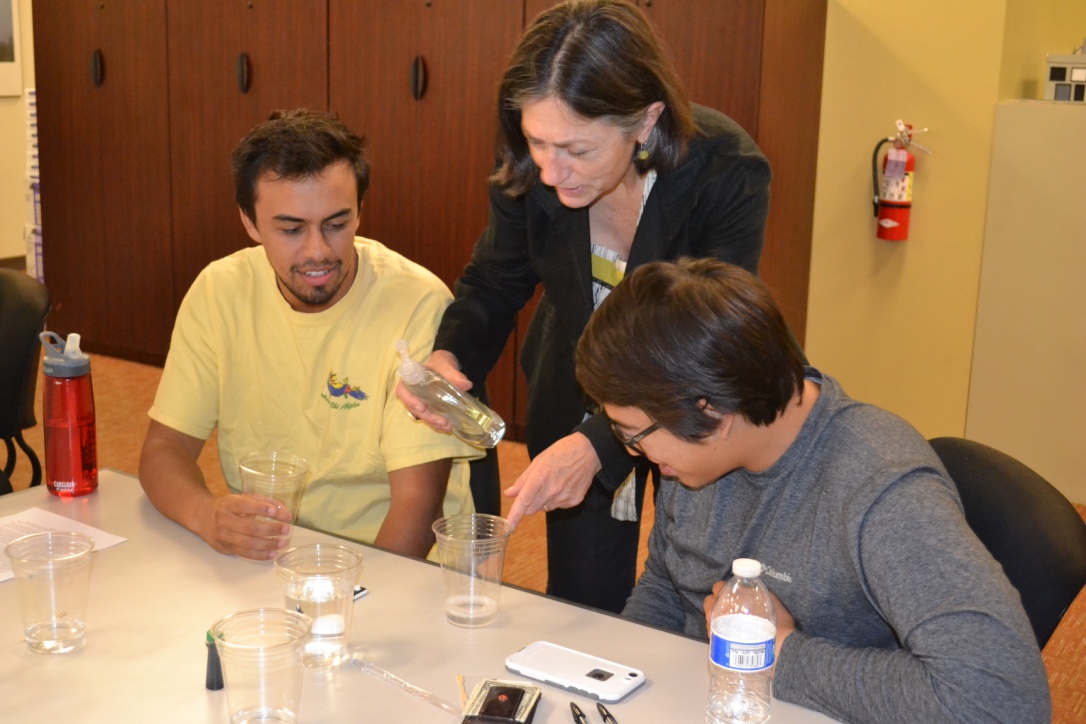Since the first DNA exoneration took place in 1989, forensic DNA testing has become an important investigative tool to solve crimes and to exonerate the innocent.

NCIP Legal Director Linda Starr walks around the class to distribute experiment materials. Photo: Jaclyn Gioiosa
On September 29th, NCIP clinic students had an exciting in-class opportunity to learn about DNA testing and analysis by extracting DNA from their own skin cells. Here is how the demonstration worked:
Students began by gargling salt water for one minute and then spitting the salt water into a clear plastic cup. The gargling and spitting process facilitated the transfer of loose skin cells from inside the students’ cheeks to the cup.
Next, students added one drop of clear liquid dish soap to the cup and mixed it with the salt water. The soap acted as an agent, which broke down the skin cell membranes and released the cell DNA into the surrounding salt water.
In a separate cup, students mixed rubbing alcohol with three drops of food coloring and gently poured the mixture into the salt water cup. After waiting two-and-a-half minutes, little white strings of DNA and white DNA clumps began to form inside the cup. Using a small stir stick, students extracted the DNA string by pulling it out of the cup.
In practice, after forensic scientists extract DNA, they use a process called polymerase chain reaction (PCR) to then amplify a single piece of DNA to generate thousands to millions of copies of a specific part of the extracted DNA strand. Copying a segment of the DNA strand with PCR amplification allows scientists to compare the DNA profile of one individual to multiple others including DNA profiles of particular criminal suspects or DNA profiles in the Combined DNA Index System (CODIS), the FBI’s DNA database.
The DNA extraction activity was part of the NCIP clinic’s week-long DNA module, which teaches students the basics of DNA, the capabilities and limitations of DNA, how to read and understand DNA testing lab reports, and how DNA testing applies to NCIP’s cases.
According to NCIP student Regan Bradley-Brown, “Before this class, I was unaware of the vast number of DNA testing options. This module was applicable to students, regardless of their intention to pursue criminal law. I really enjoyed hearing all the technical details, and then having an opportunity to apply them. ”
If you’d like to extract your own DNA, you can find detailed video instructions here.
